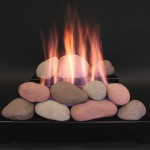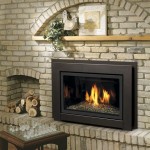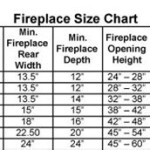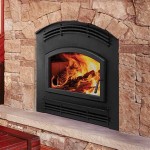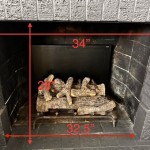Cost to Add a Gas Fireplace: A Comprehensive Guide
Adding a gas fireplace to a home offers a blend of aesthetic appeal and functional heating. Unlike traditional wood-burning fireplaces, gas fireplaces provide convenience, energy efficiency, and ease of use. However, understanding the costs involved in installing a gas fireplace is crucial for homeowners considering this upgrade. The total expense can vary considerably based on several factors, including the type of fireplace, installation requirements, and regional labor costs.
This article provides a detailed overview of the various elements contributing to the overall cost of adding a gas fireplace. It explores the different types of gas fireplaces available, the essential installation steps and their associated expenses, and other considerations that can influence the final price. By providing a comprehensive understanding of these factors, homeowners can make informed decisions and budget effectively for their gas fireplace installation project.
Fireplace Type and Purchase Cost
The initial cost driver is the type of gas fireplace selected. Gas fireplaces come in a variety of styles, each with a different price point reflecting its features, complexity, and aesthetic design. The commonly encountered types include gas inserts, gas log sets, and direct vent fireplaces.
Gas Inserts: These are designed to be placed inside existing wood-burning fireplaces. They provide a convenient way to convert a traditional fireplace to gas, eliminating the need for wood storage and reducing emissions. Gas inserts typically range in price from $2,000 to $6,000, excluding installation. The cost is influenced by factors such as heating capacity (measured in BTU, or British Thermal Units), aesthetic features (e.g., log sets, ember beds), and the presence of features like remote controls and thermostats.
Gas Log Sets: These are the simplest and most affordable option. They consist of ceramic logs placed within an existing fireplace opening, connected to a gas line. Gas log sets essentially provide a decorative flame and minimal heat. The cost ranges from $300 to $1,500, depending on the size, realism, and material of the logs. Installation is generally simpler than with gas inserts or direct vent fireplaces, but still requires a professional to ensure safe and compliant connection to the gas line.
Direct Vent Fireplaces: These are self-contained units that vent directly to the outside, either through a wall or the roof. Direct vent fireplaces are highly efficient because they draw combustion air from outside and exhaust all fumes externally, preventing indoor air pollution. They offer a wide range of styles, from traditional to contemporary, and are often used in new construction or remodeling projects where a traditional fireplace doesn't exist. The price for a direct vent fireplace typically ranges from $2,500 to $8,000, not including installation. The cost is influenced by factors such as size, BTU rating, and the complexity of the venting system.
Beyond the basic type, aesthetic features also contribute to the overall cost. Options like decorative fronts, realistic log sets, and integrated lighting systems add to the expense. Homeowners should carefully consider their aesthetic preferences and budget when selecting the appropriate gas fireplace.
Installation Costs and Labor
Installation costs represent a significant portion of the total expense. These costs are influenced by several factors, including the complexity of the installation, the need for gas line extensions, and regional labor rates. It's essential to obtain multiple quotes from qualified and licensed professionals to ensure fair pricing and competent workmanship.
Gas Line Installation: This is often the most significant installation expense, especially if a gas line does not already exist near the fireplace location. Extending a gas line from the main supply to the fireplace requires the expertise of a licensed plumber or gas fitter. The cost depends on the distance of the gas line extension, the complexity of running the line through walls or floors, and any necessary permits. Gas line installation can range from $500 to $2,000 or more, depending on these factors.
Venting Installation: Direct vent fireplaces require a venting system to expel exhaust gases safely. The cost of venting installation depends on the type of venting required (horizontal or vertical), the length of the vent run, and the complexity of routing the vent through walls or the roof. Venting installation can range from $300 to $1,500, depending on these factors.
Electrical Work: Many gas fireplaces require an electrical connection for features like blowers, remote controls, and electronic ignition systems. If an electrical outlet is not already present near the fireplace location, an electrician will need to install one. This can cost between $100 and $500, depending on the complexity of the wiring and any necessary permits.
Framing and Finishing: In some cases, framing and finishing work may be required to create a suitable enclosure for the gas fireplace. This work can include building a mantel, adding decorative trim, and finishing the surrounding wall. Framing and finishing costs can vary widely depending on the scope of the project and the materials used.
Permits and Inspections: Local building codes typically require permits for gas fireplace installations. The cost of permits varies by municipality but generally ranges from $50 to $200. Inspections are also required to ensure that the installation meets safety standards. Failing to obtain necessary permits can result in fines and delays.
Labor costs fluctuate based on geographic location and the prevailing rates of qualified contractors. It’s advisable to request detailed cost breakdowns from installers, clarifying charges for different aspects of the project.
Additional Considerations and Hidden Costs
Beyond the basic fireplace cost and installation charges, several less obvious factors can impact the overall project expense. Being aware of these potential hidden costs allows homeowners to plan their budgets more accurately and avoid unexpected financial burdens.
Demolition and Removal: If an existing wood-burning fireplace needs to be removed or modified to accommodate the gas fireplace, demolition and removal costs will be incurred. This can range from $200 to $1,000, depending on the size and complexity of the fireplace.
Masonry Work: In some cases, masonry work may be needed to repair or modify the existing fireplace structure. This can include repairing cracks, rebuilding the firebox, or adding a new hearth. Masonry work can be costly, ranging from $500 to several thousand dollars, depending on the scope of the work.
Upgrades and Accessories: Homeowners may choose to add upgrades and accessories to their gas fireplace, such as a remote control, a blower fan, or a decorative surround. These additions can add to the overall cost of the project.
Fuel Costs: While gas fireplaces are more efficient than wood-burning fireplaces, they still consume fuel. The cost of natural gas or propane will depend on local rates and usage patterns. It's essential to factor in ongoing fuel costs when budgeting for a gas fireplace.
Maintenance and Repairs: Gas fireplaces require periodic maintenance to ensure safe and efficient operation. This can include cleaning the burners, inspecting the venting system, and replacing worn parts. Homeowners should budget for annual maintenance costs.
Insurance Implications: Adding a gas fireplace may affect a homeowner's insurance premiums. It's advisable to consult with an insurance provider to understand any potential changes to coverage.
Regional Price Variations: Labor costs, permit fees, and material prices can vary significantly depending on geographic location. Homeowners should obtain quotes from local contractors to get an accurate estimate of the cost of adding a gas fireplace in their area.
Contingency Funds: It is wise to set aside a contingency fund to cover unexpected expenses that may arise during the installation process. This can help to avoid financial stress and ensure that the project stays on track.
By considering these additional factors and hidden costs, homeowners can develop a more accurate and comprehensive budget for their gas fireplace installation project. Thorough planning and research are essential to ensure a successful and cost-effective outcome.
In conclusion, the cost to add a gas fireplace encompasses the price of the unit itself, installation fees, potential infrastructure modifications, and ongoing maintenance. Careful assessment of individual needs, coupled with thorough research and multiple contractor quotes, is crucial for making an informed financial decision and achieving a satisfying and efficient home heating solution.

How Much Does A Gas Fireplace Cost Fireplaces Direct Learning Center

How Much Does A Gas Fireplace Cost Fireplaces Direct Learning Center

How Much Does It Cost To Install A Gas Fireplace Homeserve Usa

Gas Fireplace Cost Guide Unit Add Ons Installation More

Gas Fireplace Installation Cost Dbs Inc

Gas Fireplace Insert Cost Forbes Home

2024 Fireplace Installation Costs Gas Wood Burning Electric

What Does It Cost To Install A Fireplace Vs Wood Stove Stamford Fireplaces

Estimated Page Fireplaces Stoves Inserts Wood Gas Pellet

How Much Do Gas Fireplaces Cost Dreifuss

